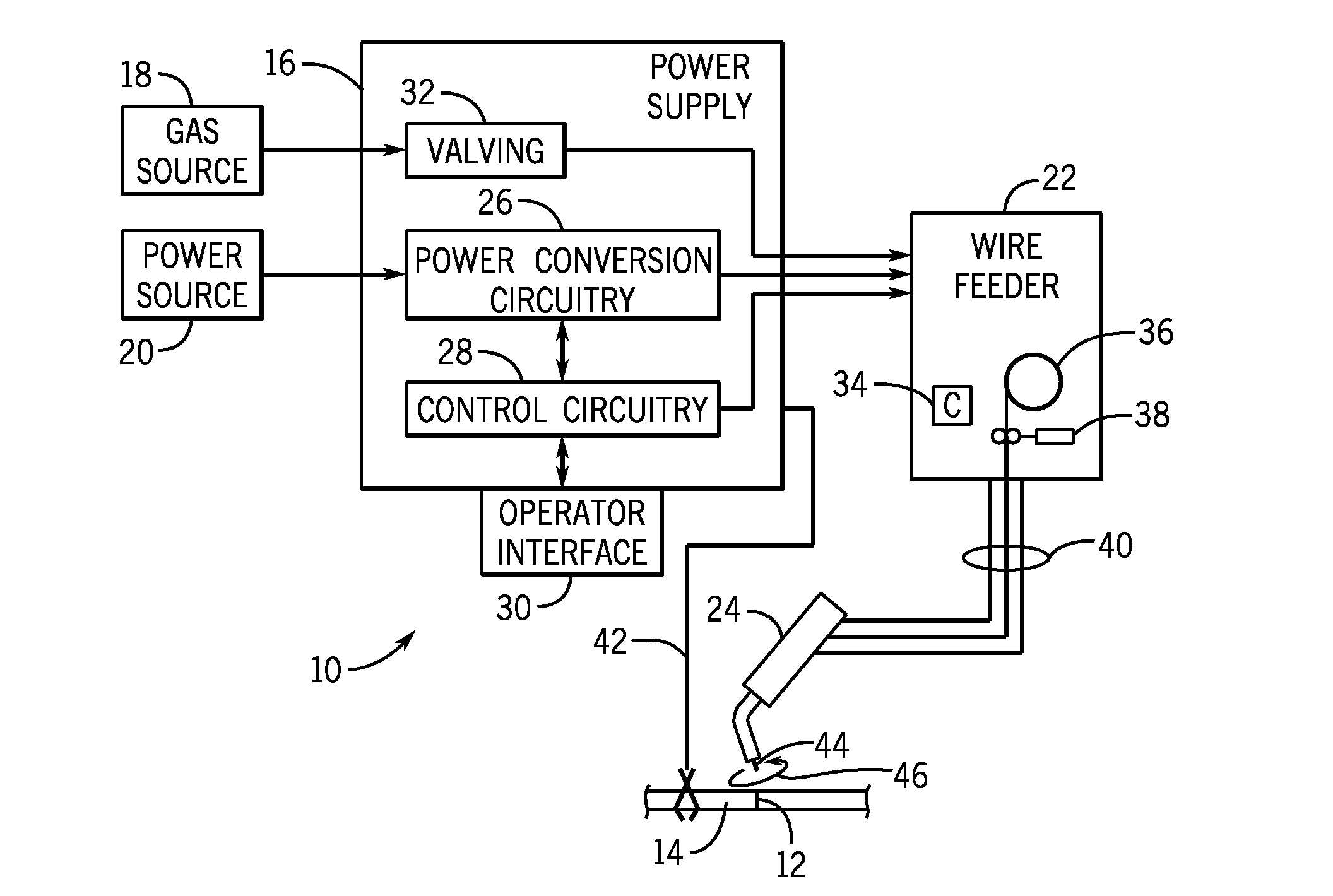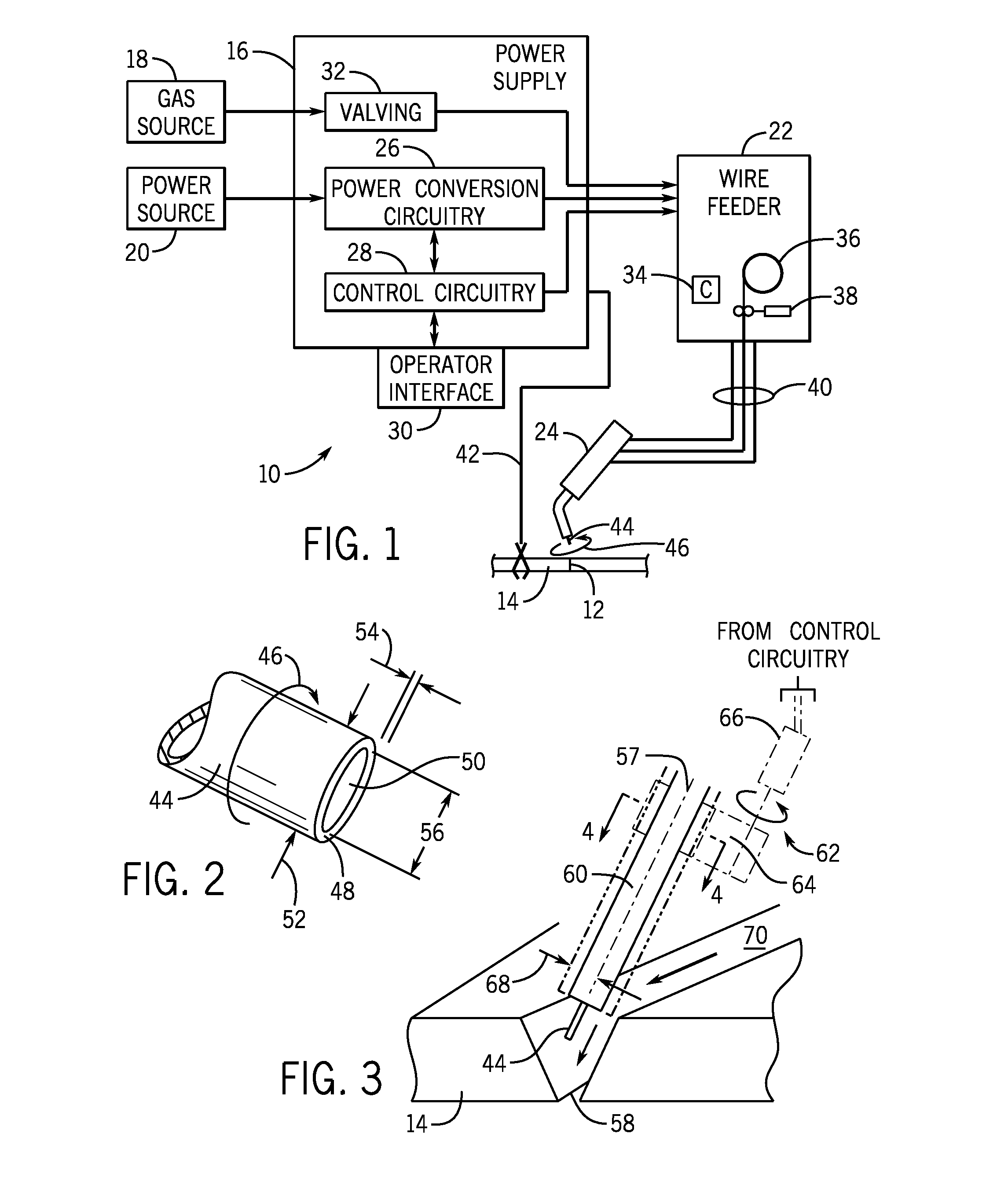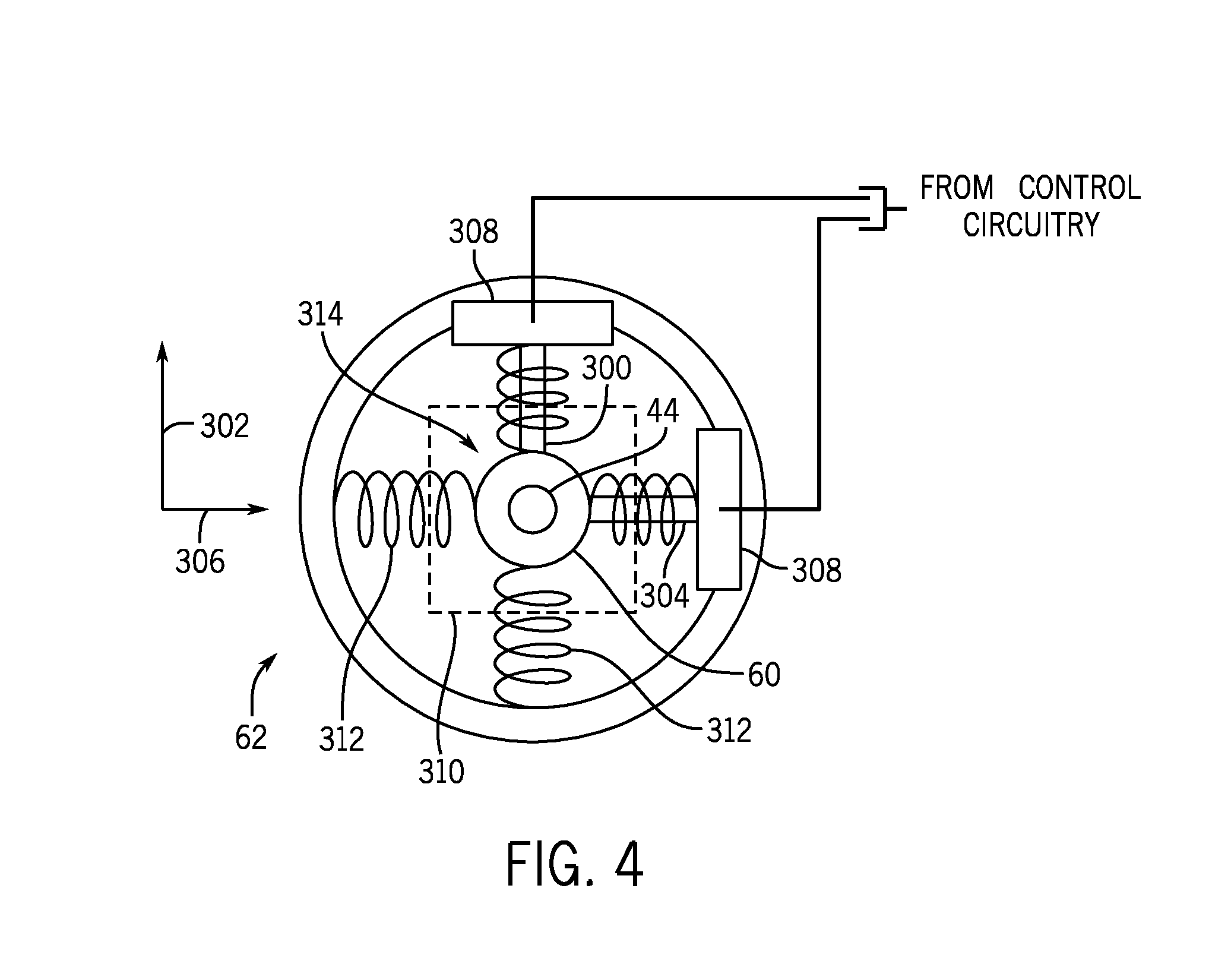Synchronized rotating arc welding method and system
a rotating arc welding and synchronized technology, applied in the field of welding techniques, can solve the problems of inert shielding gases, common divisions between welding apparatuses, and relatively high cost, and achieve the effects of increasing the success rate of welded pieces, speeding up the overall manufacturing process, and increasing the speed of processes
- Summary
- Abstract
- Description
- Claims
- Application Information
AI Technical Summary
Benefits of technology
Problems solved by technology
Method used
Image
Examples
Embodiment Construction
[0036]FIG. 1 illustrates an exemplary welding system 10 utilizing movement of a metal cored welding wire electrode though as discussed earlier these techniques could be used with many types of wires, such as solid wire or flux cored wire. The system 10 is designed to produce a weld 12 on a workpiece 14. The weld may be oriented in any desired manner, including butt weld, lap weld, angled welds, out-of-position welds, and so forth. The system includes a power supply 16 that will typically be coupled to a gas source 18 and to a power source 20, such as the power grid. Other power sources, of course, include generators, engine-driven power packs, and so forth. A wire feeder 22 is coupled to the power supply 16 and supplies the metal cored welding wire to a welding torch 24.
[0037]In the illustrated embodiment, the power supply 16 will include power conversion circuitry 26 coupled to control circuitry 28 that regulates operation of the power conversion circuitry to produce power output s...
PUM
| Property | Measurement | Unit |
|---|---|---|
| diameters | aaaaa | aaaaa |
| diameters | aaaaa | aaaaa |
| length | aaaaa | aaaaa |
Abstract
Description
Claims
Application Information
 Login to View More
Login to View More - R&D
- Intellectual Property
- Life Sciences
- Materials
- Tech Scout
- Unparalleled Data Quality
- Higher Quality Content
- 60% Fewer Hallucinations
Browse by: Latest US Patents, China's latest patents, Technical Efficacy Thesaurus, Application Domain, Technology Topic, Popular Technical Reports.
© 2025 PatSnap. All rights reserved.Legal|Privacy policy|Modern Slavery Act Transparency Statement|Sitemap|About US| Contact US: help@patsnap.com



